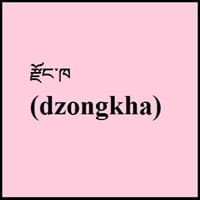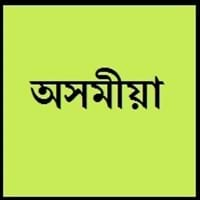Dzongkha and Assamese
National Language
Bhutan
Bangladesh, India
Second Language
India
Not spoken in any of the countries
Speaking Continents
Asia
Asia
Minority Language
India
Bangladesh, Bhutan
Regulated By
Dzongkha Development Commission
Asam Sahitya Sabha
Interesting Facts
- Standard romanization of the Dzongkha language is Roman Dzongkha.
- Assamese was reinstated as the state language of Assam in 1873.
- Assamese language has its own stream of origin, it is evolved in a different way from rest of the Indo-Aryan languages of India.
Similar To
Sikkimese Language
Bengali and Oriya
Derived From
Tibetan Language
Sanskrit Language
Alphabets in
Dzongkha-Alphabets.jpg#200
Assamese-Alphabets.jpg#200
Scripts
Dzongkha Braille, Tibetan Braille
Bengali
Writing Direction
Not Available
Left-To-Right, Horizontal
Language Levels
Not Available
Hello
Kuzoozangpo La
nomoskaar
Thank You
Kaadinchhey La
ḍhonyobaaḍ
How Are You?
Ga Day Bay Zhu Yoe Ga ?
aapuni kene aase?
Good Night
lek shom ay zim
subhoraattri
Good Evening
Not Available
subha gadhuli
Good Afternoon
Not Available
subha abeli
Good Morning
Not Available
suprobhaat
Please
Not Available
anugroha kori
Sorry
Tsip maza
moi ḍukkhita
I Love You
Nga cheu lu ga
moi tomaak bhaalpaao
Excuse Me
Tsip maza
kyoma koribo
Where They Speak
Bhutan
Western Assam
Dialect 2
Lunana
Goalpariya
Where They Speak
Bhutan
Western Assam
How Many People Speak
Not Available
Where They Speak
Bhutan
Assam
Total No. Of Dialects
Not Available
Speaking Population
Not Available
Second Language Speakers
Not Available
Native Name
རྫོང་ཁ (dzongkha)
অসমীয়া (asamīẏa)
Alternative Names
Bhotia of Bhutan, Bhotia of Dukpa, Bhutanese, Drukha, Drukke, Dukpa, Jonkha, Rdzongkha, Zongkhar
Asambe, Asami, Asamiya
French Name
dzongkha
assamais
German Name
Dzongkha
Assamesisch
Pronunciation
Not available
Not Available
Ethnicity
Ngalop people
Assamese people
Origin
17th Century
7th century A.D
Language Family
Sino-Tibetan Family
Indo-European Family
Subgroup
Not Available
Indo-Iranian
Branch
Tibeto-Burman
Indic
Early Forms
No early forms
Kamarupa
Standard Forms
Dzongkha
Assamese
Language Position
Not Available
Signed Forms
Not Available
Not Available
Scope
Individual
Individual
ISO 639 6
Not Available
Not Available
Glottocode
nucl1307
assa1263
Linguasphere
No data Available
59-AAF-w
Language Type
Living
Living
Language Linguistic Typology
Not Available
Subject-Object-Verb
Language Morphological Typology
Not Available
Not Available
All Dzongkha and Assamese Dialects
Most languages have dialects where each dialect differ from other dialect with respect to grammar and vocabulary. Here you will get to know all Dzongkha and Assamese dialects. Various dialects of Dzongkha and Assamese language differ in their pronunciations and words. Dialects of Dzongkha are spoken in different Dzongkha Speaking Countries whereas Assamese Dialects are spoken in different Assamese speaking countries. Also the number of people speaking Dzongkha vs Assamese Dialects varies from few thousands to many millions. Some of the Dzongkha dialects include: Laya, Lunana. Assamese dialects include: Kamrupi , Goalpariya. Also learn about dialects in South American Languages and North American Languages.
Dzongkha and Assamese Speaking population
Dzongkha and Assamese speaking population is one of the factors based on which Dzongkha and Assamese languages can be compared. The total count of Dzongkha and Assamese Speaking population in percentage is also given. The percentage of people speaking Dzongkha language is Not Available whereas the percentage of people speaking Assamese language is 0.24 %. When we compare the speaking population of any two languages we get to know which of two languages is more popular. Find more details about how many people speak Dzongkha and Assamese on Dzongkha vs Assamese where you will get native speakers, speaking population in percentage and native names.
Dzongkha and Assamese Language Codes
Dzongkha and Assamese language codes are used in those applications where using language names are tedious. Dzongkha and Assamese Language Codes include all the international language codes, glottocodes and linguasphere.





